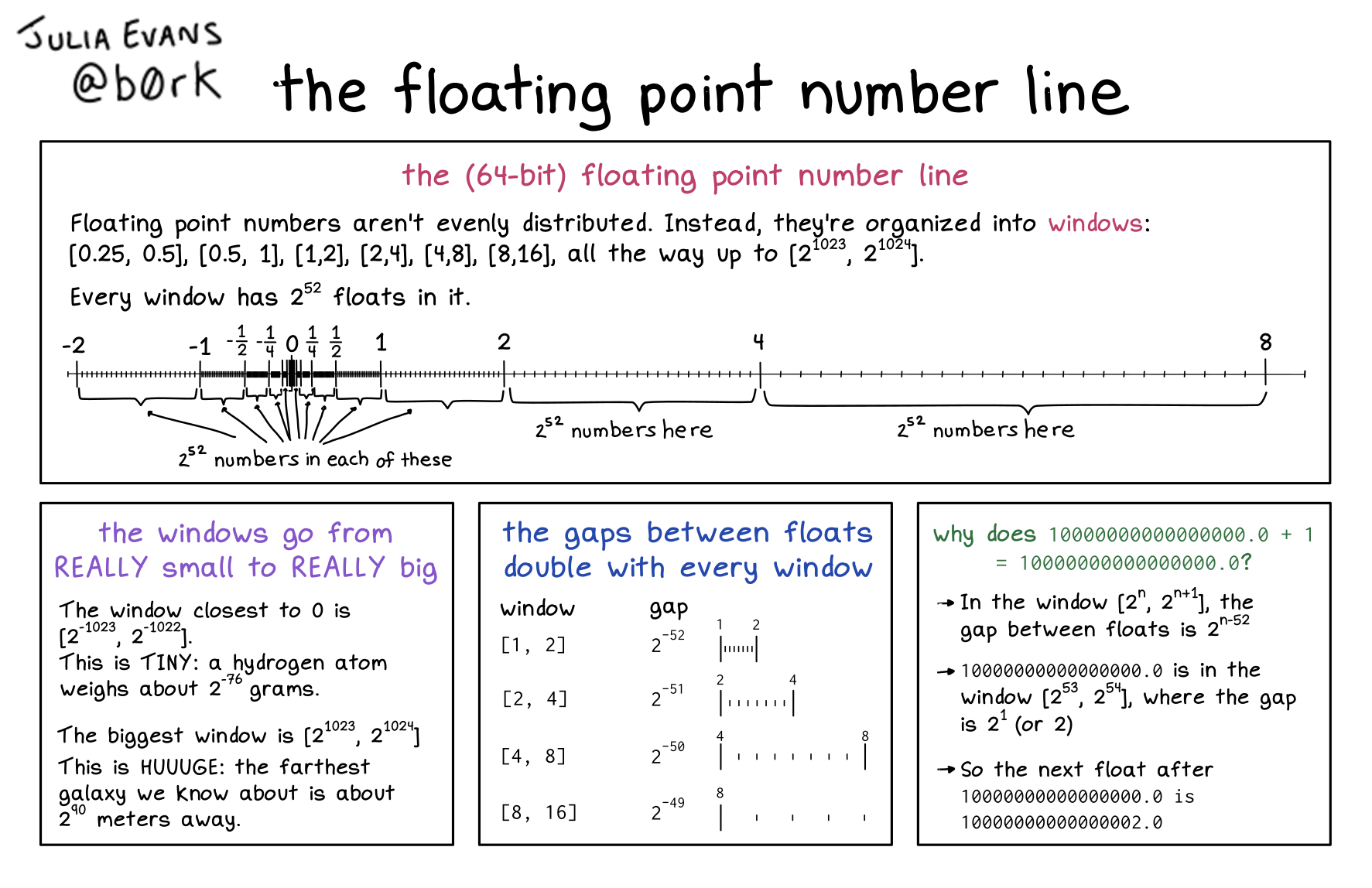
Here's a preview from my zine, How Integers and Floats Work! If you want to see more comics like this, sign up for my saturday comics newsletter or browse more comics!
 browse more comics!
get the zine!
browse more comics!
get the zine!
read the transcript!
### the (64-bit) floating point number line
Floating point numbers aren’t evenly distributed. Instead, they’re organized into windows: [0.25, 0.5], [0.5, 1], [1,2], [2,4], [4,8], [8,16], all the way up to [2^1023, 2^1024].
Every window has 252 floats in it.
The windows [-2, -1], [-1, -1/2], [-1/2, -1/4], [-1/4, 0], [0, 1/4], [1/4, 1/2], [1/2, 1], and [1, 2], each have 2^52 numbers. [2, 4] has 2^52 numbers. [4, 8] has 2^52 numbers.
Illustration of a horizontal line, with the windows plotted out on it, showing that each window doubles in size as it moves away from zero.
the windows go from REALLY small to REALLY big
The window closest to 0 is [2^-1023, 2^-1022]
This is TINY: a hydrogen atom weighs about 2^-76 grams.
The biggest window is [2^1023, 2^1024].
This is HUUUGE: the farthest galaxy we know about is about 2^90 meters away.
the gaps between floats double with every window
window: [1, 2] gap: 2^-52
window: [2, 4] gap: 2^-51
window: [4, 8] gap: 2^-50
window: [8, 16] gap: 2^-49
why does 10000000000000000.0 + 1 = 10000000000000000.0?
- In the window [2^n, 2^n+1], the gap between floats is 2^n-52
10000000000000000.0is in the window [2^53, 2^54], where the gap is 2^1 (or 2)- So the next float after
10000000000000000.0is10000000000000002.0
Saturday Morning Comics!
Want another comic like this in your email every Saturday? Sign up here!
